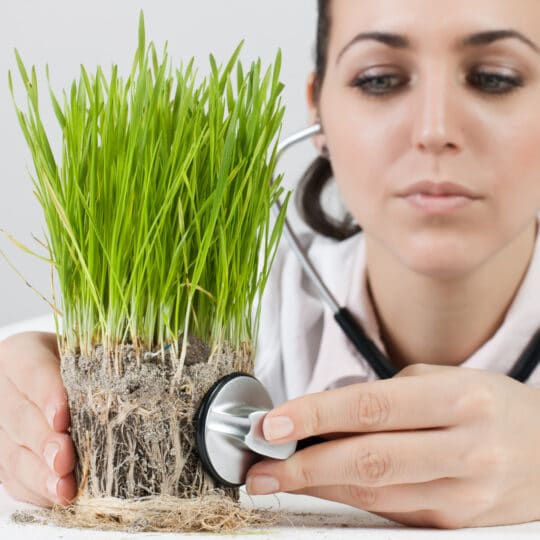Is There a Plant Doctor in the House?
Tips to Turning Black Thumbs Green
Posted
July 23, 2020

We’re not all blessed with green thumbs. Though some claim they can never keep any plants alive no matter how much they try. Is there a simple solution? Other than faux plants, try the tips below and if all else fails, call in a plant doctor.
Tips for Keeping Healthy Plants
If you’ve longed desired to fill your home and garden with fresh flowers and greenery, but haven’t had much luck in the lush department, try out these tips:
- Pick hardy plants. There are plant varieties that thrive on neglect—meaning, they don’t need a lot of water or pruning. Just plant it and forget it. Many are in the cactus and succulent families, but there are also some green houseplants that don’t need a lot of attention.
- Become familiar with basic plant needs. If you know you’re going to forget to water a plant, get one that doesn’t need a lot. If you think you’re going to overwater a plant, start with a species that can swim. Get a plant that can easily adapt to the environment you’re about to place it in: bright sunny room vs. office with artificial light.
- Learn from your mistakes. If one type of plant didn’t survive, try another variety until you find one that you can successfully keep alive. There are other factors that could also impact plant health, such as pets, kids, and life itself. For all other inquiries, ask the plant doctor.
Paging the Plant Doctor
If you’ve read the care card, adjusted water and light schedules, and are still having issues, it may be time to seek professional help. Here are some signs and solutions to some of the most common plant problems.
Overwatering. If the soil is moist and growing fungus and the plant leaves are yellowing, you’re probably overwatering. It’s okay to let the soil dry out. Some plants—like cactus—prefer this, and some ferns and other houseplants can tolerate it. Help prevent overwatering with good drainage. This way, plant roots aren’t sitting in water.
Not enough water. If leaves are drooping and dropping, give your plant a pick-me-up with some water. Saturate the soil with warm water and then let it gradually dry out.
Evaluate the sun situation. Whether indoors or out, plants need some source of light. If you notice burnt-looking leaf lips or a blanched color, chances are it’s getting too much light. Plants with skinny, spindly leaves that start dropping is a sign it needs more light. Go for the middle ground. If your home doesn’t get a lot of natural light, compensate with artificial rays.
When it comes to fertilizer, you can provide too much of a good thing. Leaves that turn brown and develop crispy edges could have been fed too much. If the plant is in the ground, its roots continue to grow and thrive. Potted plants need more attention and additional fertilizer to keep them happy.
The size of the pot also matters. If you want your plant to grow larger, place it in a larger pot so that the roots have room to grow, giving more energy to the plant. You’ll also want to refresh the potting soil since it does get old after a while.
It’s worth a try to save a plant you think has died. Blast it with some light, water, fertilizer, and love and see what happens. Removing the dead parts also helps the plant refocus its energy or growing what’s still good. For more information on how to resuscitate your dying plant, contact the plant doctors at Elite Tree Care.